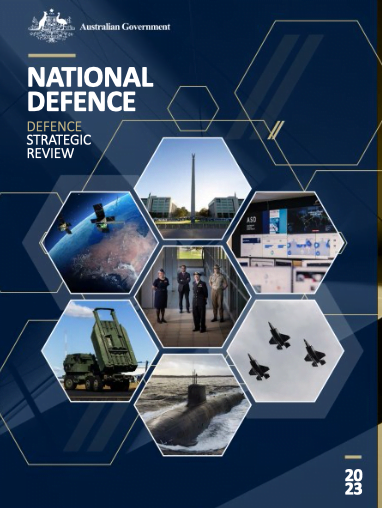By Robbin Laird
During my current visit to Australia is support of the 27 September 2023 Williams Foundation seminar, I was able to meet with Dr. Stephan Frühling, Professor at the Coral Bell School of Asia Pacific Affairs at the Australian National University.
Professor Stephan Frühling teaches and researches at the Strategic and Defence Studies Centre of The Australian National University and has widely published on Australian defence policy, defence planning and strategy, nuclear weapons and NATO.
We discussed four key aspects of the impact of the Defence Strategic Review and the process associated with it.
First, Frühling underscored that the DSR has recognized the need for a new approach to planning and shaping force structure development or at least new to the practices of the Department of Defence. The document speaks of net assessment planning, a term which he introduced in one of his books.
What the Department means in using this term is threat-based planning in which force structure development decisions are made in direct response to adversary capabilities and likely operations against Australia. That the review calls for government-endorsed planning scenarios is important in this context, and implementation of this change is underway within the Department but it is early days with regard to judging the outcome of this process shift within DoD.
Second, even with the issuance of the DSR, what strategy Australia will pursue to achieve deterrence and defence is not actually spelled out in the document. What is clear from AUSMIN communiques since 2020 and the increased cooperation with the U.S.—and now also Japan—on the Force Posture Initiative is that the government has committed itself to working with the American-led effort in Indo-Pacific deterrence and defence. But the DSR only acknowledges this in passing, in relation to the development of the bare bases. It also means that government struggles to articulate to the public how AUKUS fits within the broader Australian defence policy settings.
Third, this raises a fundamental question according to Frühling.
How do you craft Australian force structure design without understanding explicitly what the U.S. will do in the same conflict?
There will be operations Australia will want to be able to undertake self-reliantly; but what these would entail and what the demands will be on Australian forces will ultimately arise from within the context of overall, US-led theatre strategy. This is something that Australia’s defence planning process, or U.S.-Australia alliance discussions, are yet to come to terms with.
Frühling argued that shaping a practical way ahead could well be driven by the Australians and Americans working practical details of how their forces will work together in the years ahead.
In other words, rather than white papers or Australian DoD planning documents, perhaps we should look at how the ADF and Indo-PACOM work a way ahead. Of course, the U.S. is itself in the throes of fundamental change with regard to its force structure.
What Frühling was suggesting that this could be a two-way street between shaping the way ahead with regard to the ADF and with regard to the U.S. and other allied forces, perhaps most notably the Japanese.
Frühling underscored: “One can’t do the DSR planning without knowing the broader context of what the U.S. is doing.”
The fourth key element we discussed was the focus of Australian defence policy. Frühling argued: “The DSR prioritizes deterrence by denial. With such a focus, the success of our strategy hinges on actually being able to credibly deny whatever the Chinese want to do.
“And I just don’t think that we are in such a position to do so.”
In a major conflict, Australia will need to carefully manage risks of attrition; setting the expectation that every Chinese operation would need to be denied by the ADF would not be helpful.
We discussed an approach we both felt was more credible: crafting, shaping and enhancing a defence in depth strategy. Frühling emphasized: “This is a much more realistic concept. It focuses on preparedness, resilience and national build out of sovereign capabilities to sustain our ability to stay in the fight.”
Ironically, I would add, that from an American point of view that might be the key contribution of Australia, not projecting power away from Australian territory. It will be interesting to see what happens as the ADF is restructured and the U.S. forces work through the fundamental changes associated with force distribution.
I would argue that Australia will certainly have its impact on the American military leadership located in Hawaii thinks about the way ahead. It is a two-way street.


